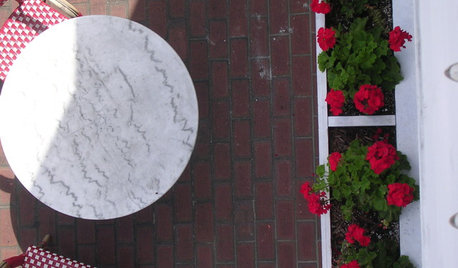New lot has invasive plants
dottyinduncan
10 years ago
Related Stories

GARDENING GUIDESDo You Have This Invasive Plant in Your Yard?
Garlic mustard is spreading across the U.S. Here’s how to spot it and what to do
Full Story
TREESNative Plant Alternatives to Invasive Common Buckthorn
Learn how to identify and control this aggressive plant, and what to grow in its place
Full Story
INSPIRING GARDENSFrom Concrete Lot to Gracious Organic Garden in Seattle
Plants, pests and even weeds have a place in this landscape, which offers an edible bounty and a feast for the eyes
Full Story
GARDENING GUIDES6 Plants That Beat Butterfly Bush for the Wildlife Draw
It's invasive, a nonnative and a poor insect magnet. Check out these better alternatives to butterfly bush in the garden
Full Story
GARDENING GUIDESGreat Design Plant: Bugle Weed, a Quick Ground Cover
It’s highly adaptable, suppresses weeds, reduces erosion and provide weeks of bright flowers. Just watch for invasiveness
Full Story
MY HOUZZA Light-Filled Artist’s Loft Has Touches of Home
A painter finds the perfect studio space in Seattle’s vibrant Ballard neighborhood
Full Story
LIFEYou Said It: ‘Each Piece Has a Story’ and More Words From the Week
Whether beating paper to a pulp or hanging glass plates as shed windows, Houzzers showed off amazing ingenuity this week
Full Story
WOODKnotty and Nice: Highly Textured Wood Has a Modern Revival
Whether it's cedar, fir or pine, if a wood has a knot, it's hot
Full Story
REMODELING GUIDESOne Guy Found a $175,000 Comic in His Wall. What Has Your Home Hidden?
Have you found a treasure, large or small, when remodeling your house? We want to see it!
Full StoryMore Discussions











Embothrium
George Three LLC
Related Professionals
South Orange Landscape Architects & Landscape Designers · Taylorsville Landscape Architects & Landscape Designers · East Lake-Orient Park Landscape Contractors · Munster Landscape Contractors · Northport Landscape Contractors · Rockwall Landscape Contractors · San Pedro Landscape Contractors · View Park-Windsor Hills Landscape Contractors · West Covina Landscape Contractors · Bothell Fence Contractors · Brushy Creek Fence Contractors · Chicago Fence Contractors · Marana Fence Contractors · Orlando Fence Contractors · Saint Louis Park Fence ContractorsdottyinduncanOriginal Author
greenmann
gardengal48 (PNW Z8/9)
Embothrium
mikebotann
Embothrium